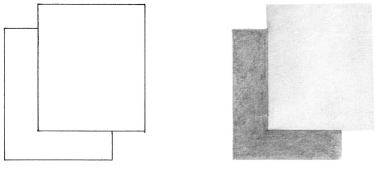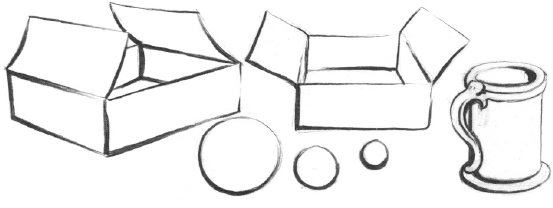11
SHADING AND RENDERING
What we interpret as lines in optical reality are actually the contrasts between and among surfaces and tonal differences, as illustrated to the right.

The choice of how one shades or renders these surfaces is ultimately a matter of fitness to purpose, style, and creativity.

The methods and styles for shading in surfaces can range from the lightest gestural suggestions to all the details and gradations of photorealistic rendering, and with everything in between.

SKETCHING SURFACE TONES
Line Quality
It is possible to suggest tonal differences and three-dimensional form by manipulating the weight of line alone. By making some lines darker and others lighter, highlights and shadows can be implied.

Line Shading and Hatching
Surfaces tones can be indicated by dots, lines, hatching patterns, or virtually any kind of disturbance that sets off one area against another. In sketching, sometimes a simple squiggled line will not only be adequate but also most effective.
SHADING WITH PARALLEL LINES
Using parallel lines is one way to get a surface. But notice the optical ...
Get Basic Perspective Drawing: A Visual Approach, 5th Edition now with the O’Reilly learning platform.
O’Reilly members experience books, live events, courses curated by job role, and more from O’Reilly and nearly 200 top publishers.

